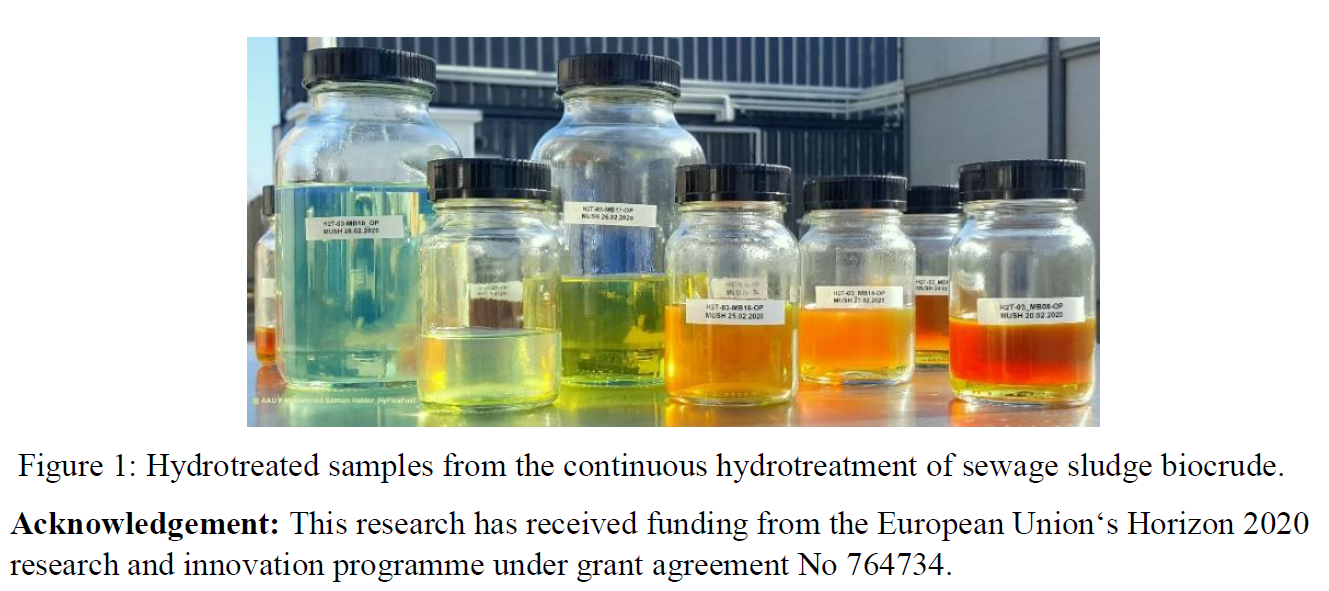Global warming and raising public concerns are driving factors to decarbonize the long-haul transportation sector. Hydrothermal liquefaction (HTL) acquires a unique place due to the production of an energetically dense, high quality biocrude at 300-400 °C and 15-30 MPa, with no pre-drying and lipid restriction in biomass feedstock. In this regard, the conversion of waste-water solid biomass into sustainable drop-in biofuels opens up an unparalleled opportunity where on one hand it reduces the overall carbon footprint and on the other hand it can also valorize the solid residues for applications like soil conditioners (fertilizers) etc. However, HTL biocrude cannot be directly utilized as drop-in diesel and jet fuel, because of its high content of oxygen (O) and nitrogen (N) along with its considerable amounts of organometallics. Consequently, catalytic hydrotreatment of HTL biocrudes is the most promising pathway to achieve drop-in fuels. This process involves the treatment of HTL biocrude at high-temperature and high hydrogen pressure, in the presence of a suitable catalyst. In this work we will not only demonstrate how to obtain smooth continuous hydroprocessing operations but also address the potential uncertainties (i.e. coke formation, catalyst deactivation, and reactor plugging etc.) and their unequivocal mitigation. Results include the reporting of an experimental campaign (~160 hours on stream) on sewage sludge biocrude. Overall, neither plugging nor pressure drop were experienced throughout the entire operation.
This work will also thoroughly discuss the effect of nitrogen and organometallics on unwanted coke formation and reactor plugging and describe the scientific relevance and strategies to overcome this inherent issue during the continuous hydrotreatment. Experiments exhibit the parametric screening of different process conditions such as temperature, H2 pressure and space velocity. Complete deoxygenation (100%) and almost complete denitrogenation (~96%) were achieved. In addition, the emphasis is also given to meet the final fuel specifications. Therefore, hydrotreated products (Figure 1) also underwent true-boiling point fractional distillation and showed on-spec metal content, density, pour point, cloud point and HHV for diesel and jet fuel.

